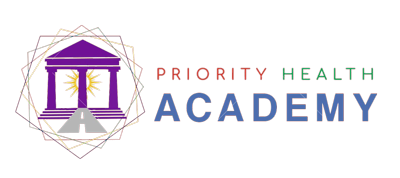23 Aug Child’s Pose Yoga: An Expert Guide
Imagine finding a place of peace, comfort, and relaxation right in the middle of your busy day. That’s what Child’s Pose Yoga offers—a gentle embrace that soothes your body and mind. Whether you’re new to yoga or a seasoned practitioner, Child’s Pose, known as Balasana in Sanskrit, is your go-to for grounding and reconnecting with yourself. In this blog, we’ll explore everything you need to know about Child’s Pose Yoga, from its benefits to how you can incorporate it into your daily routine. So, roll out your yoga mat, and let’s dive into this simple yet profound pose that speaks to the inner child in all of us.
What is Child’s Pose Yoga?
Child’s Pose, or Balasana, is one of the most fundamental yoga poses. It’s often used as a resting posture during a yoga sequence, allowing practitioners to catch their breath, relax, and center themselves. The pose resembles the fetal position, symbolizing a return to the basics, where you can let go of stress and tension. In Child’s Pose, your body folds forward with your arms stretched out in front of you, your forehead resting on the mat, and your knees bent under you. This position offers a gentle stretch to your back, hips, thighs, and ankles.
The Cultural Significance of Balasana
In yoga, the Child’s Pose is more than just a physical posture. It’s a spiritual practice rooted in ancient Indian traditions. The name Balasana comes from the Sanskrit words “Bala,” meaning child, and “Asana,” meaning pose. The posture reflects innocence, surrender, and trust—qualities often associated with children. In Indian culture, children are seen as pure souls, full of potential and untainted by the complexities of adult life. Practicing Balasana is like embracing that purity, reconnecting with a sense of innocence, and finding solace in simplicity.
Benefits of Child’s Pose Yoga
Child’s Pose might look simple, but it’s packed with benefits. First and foremost, it’s a fantastic way to relieve stress and calm the mind. When you fold into the pose, you create a sense of safety and comfort, which helps to ease anxiety. It’s also an excellent stretch for the lower back, hips, and thighs, which can become tight from sitting for long periods. Additionally, Child’s Pose improves digestion by gently massaging the internal organs and can even help with sleep by promoting relaxation.
How to Practice Child’s Pose Yoga
Getting into Child’s Pose is easy, making it perfect for beginners and experienced yogis alike. Here’s a step-by-step guide:
- Start on your hands and knees on the yoga mat. Make sure your knees are spread wide, and your big toes are touching.
- Sit back onto your heels, lowering your hips towards your heels.
- Stretch your arms forward, reaching your fingertips towards the top of the mat.
- Rest your forehead on the mat, closing your eyes if it feels comfortable.
- Take deep breaths, allowing your body to relax and melt into the pose.
Stay in the pose for as long as you need, focusing on your breath and the gentle stretch.
Modifications for Child’s Pose
Not everyone’s body is the same, and that’s okay! Child’s Pose can be easily modified to suit your needs. If you have tight hips or knees, you can place a blanket or cushion between your hips and heels for extra support. If your forehead doesn’t reach the mat comfortably, use a yoga block or folded towel to rest your head. For those with shoulder or neck discomfort, try bringing your arms back alongside your body, palms facing up, to release tension.
Emotional Connection in Child’s Pose
Child’s Pose isn’t just about stretching your muscles; it’s also a deeply emotional experience. When you fold into this pose, you’re embracing a sense of surrender and trust, much like a child does when they curl up in a comforting space. It’s a moment of vulnerability, where you let go of the outside world and reconnect with your inner self. This emotional release can be incredibly healing, helping you to process feelings of stress, anxiety, or even grief.
The Role of Breath in Child’s Pose
Breath is an essential component of any yoga practice, and Child’s Pose is no exception. When you’re in the pose, focus on taking slow, deep breaths. Inhale deeply, filling your lungs with air, and then exhale slowly, letting go of any tension. This mindful breathing helps to calm the nervous system, reduce stress, and bring a sense of peace to your practice. It’s like giving your mind a break, allowing you to reset and recharge.
When to Use Child’s Pose in Your Practice
Child’s Pose is incredibly versatile and can be used at various points in your yoga practice. It’s commonly used as a resting pose during a challenging sequence, giving you a moment to pause and regroup. You can also start your practice with Child’s Pose to center yourself or end your session with it as a way to cool down and relax. Even outside of a structured yoga class, Child’s Pose can be your go-to whenever you need a moment of calm in your day.
Child’s Pose for Different Age Groups
Child’s Pose isn’t just for adults; it’s a pose that people of all ages can enjoy. For children, it’s a natural and instinctive position that they often find comforting. For teenagers, it can be a great way to relieve stress and anxiety, especially during exams or other high-pressure situations. Adults and seniors can benefit from the gentle stretch and relaxation it provides, making it a perfect addition to any age-appropriate yoga routine.
Child’s Pose for Mental Health
In today’s fast-paced world, mental health is more important than ever, and Child’s Pose can be a valuable tool in your mental wellness toolkit. The pose promotes relaxation and helps to calm the mind, making it an excellent choice for anyone dealing with stress, anxiety, or depression.


Sorry, the comment form is closed at this time.